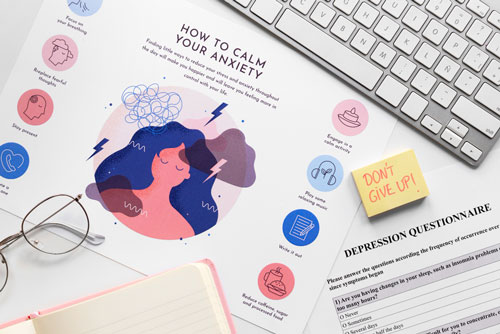Attention Deficit Hyperactivity Disorder (ADHD) is a neurodevelopmental disorder that affects many children worldwide. Recognizing the symptoms early is crucial for timely intervention and support.
What is ADHD?
Before delving into the symptoms checklist, let us briefly discuss what ADHD is. ADHD is a complex neurological condition characterized by persistent inattention, hyperactivity, and impulsivity that can impact a child’s daily life, academic performance, and relationships.

ADHD Symptoms Checklist
If you suspect your child may have ADHD, you must look for a combination of these symptoms and consult a healthcare professional for a proper evaluation.
1. Inattentive Symptoms:
a. Difficulty Sustaining Attention
– Often makes careless mistakes in schoolwork or other activities.
– Struggles to pay close attention to details and frequently overlooks them.
– Appears not to listen even when directly spoken to.
b. Trouble Organizing Tasks and Activities
– Avoids or dislikes tasks that require sustained mental effort.
– Frequently loses essential items such as school materials, keys, or toys.
– Forget daily activities or chores.
c. Avoidance of Tasks Requiring Concentration
– Finds it hard to follow through on instructions or finish schoolwork.
– Easily distracted by extraneous stimuli.
– Frequently forgets to complete assignments or homework.
2. Hyperactive Symptoms:
a. Restlessness and Fidgeting
– Often taps hands or feet or squirms in their seat.
– Gets up from the classroom desk or other situations where staying seated is expected.
b. Impulsive Behavior
– Frequently blurts out answers before the questions are completed.
– Has difficulty waiting their turn in games or conversations.
– Interrupts or intrudes on others’ conversations or games.
3. Combined Symptoms:
Children may exhibit symptoms from both the inattentive and hyperactive-impulsive categories. A diagnosis of Combined Presentation ADHD is made when symptoms from both categories are present.

Possible Coexisting Conditions
It is important to note that ADHD symptoms can overlap with other conditions, such as anxiety, depression, or learning disabilities.
Therefore, it is crucial for a qualified healthcare professional to conduct a comprehensive assessment to rule out other possible causes.
Seeking Professional Help
If you recognize several of these “ADHD symptoms in your child”, it is essential to seek professional help. A healthcare provider or a child psychologist can assess your child’s behavior, rule out other potential causes, and provide guidance on appropriate treatment options.
Conclusion
ADHD can pose challenges for children, but with early diagnosis and appropriate interventions, they can thrive and reach their full potential. This ADHD symptoms checklist is a valuable resource to help you identify possible signs in your child.
Remember that every child is unique, and a thorough evaluation by a healthcare professional is essential for an accurate diagnosis and personalized treatment plan.
If you suspect your child may have ADHD, do not hesitate to seek professional guidance. Early intervention can make a significant difference in their life, helping them develop the skills and strategies needed to manage their symptoms and succeed in various aspects of life.






